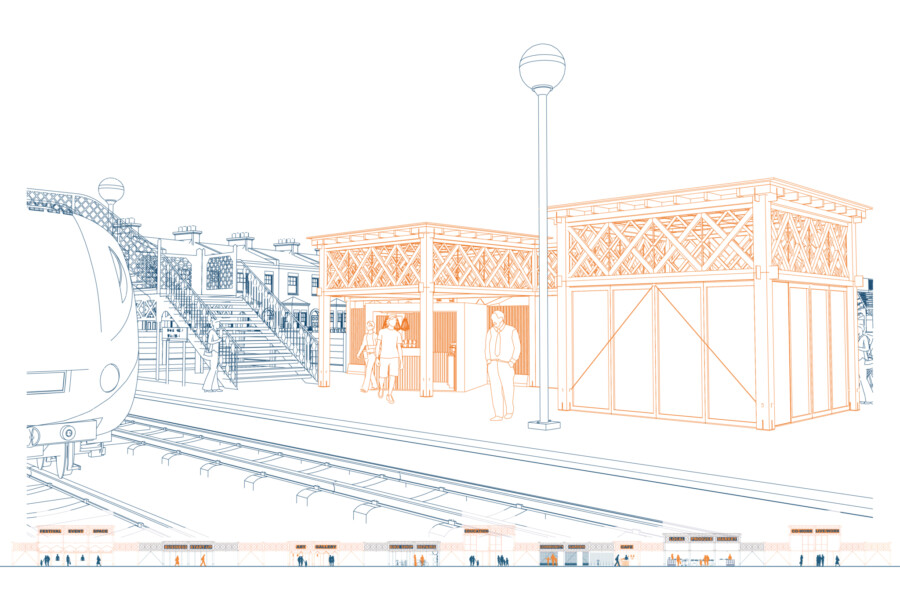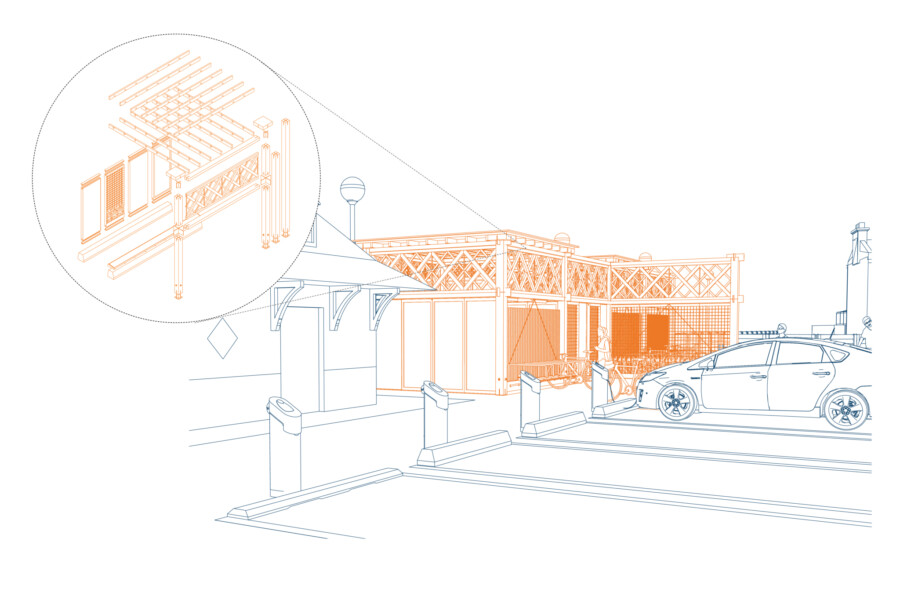Chapman Taylor creates competition concept for new type of railway station
Chapman Taylor’s Transportation team has created an innovative design competition concept for a new type of railway station, appropriate for the needs of mid-21st century society.
The concept improves facilities and passenger experience as well as enabling Network Rail to engage with communities at a station-by-station and network level.
Network Rail invited proposals that would challenge and reimagine what a station could become in the 21st century as the interface between the community and the railway. The international design competition, organised by the RIBA, focused on new solutions for small to medium stations across the UK, including the interface between a 21st century community and the rail system that can be integrated in a wide range of different suburban and rural contexts.
Our concept creates a “Linear Community”, improving passenger and community experience through activation and the shared agency of a network of not-for-profit, cross-station “Limited Station Trusts”, using a customisable, pre-engineered "kit of parts" to allow station communities to form sustainable on- and off-platform facilities to fulfil the needs of the station and wider community.
In this concept, the relationship between Network Rail and the individual communities is facilitated through a series of “Station Trusts” or not-for-profit agreements to co-curate each station and the network. Each station is a distinct entity within the context of a wider and cooperative network. In conjunction with Network Rail, communities agree what is needed at each station, both on- and off-platform. Network Rail then delivers on-platform works and collaborates with community teams which self-build off-platform facilities.
The “kit of parts” is a pre-engineered, customisable set of components that meets all of Network Rail’s design standards. They can be assembled on platform to suit the needs of passengers as well as through Network Rail’s facilitation of additional off-platform opportunities facilities, including community, commercial and residential opportunities.
Components can be overlaid with location-specific customisation. Installations can be demounted easily and used elsewhere, adding to the kit’s sustainability. The use of the ‘kit’ can extend well beyond the immediate station environs and into the wider urban environment to provide permanent, semi-permanent and temporary facilities.
For more information about the research and ideas behind this concept, please contact:
Network Rail invited proposals that would challenge and reimagine what a station could become in the 21st century as the interface between the community and the railway. The international design competition, organised by the RIBA, focused on new solutions for small to medium stations across the UK, including the interface between a 21st century community and the rail system that can be integrated in a wide range of different suburban and rural contexts.
Our concept creates a “Linear Community”, improving passenger and community experience through activation and the shared agency of a network of not-for-profit, cross-station “Limited Station Trusts”, using a customisable, pre-engineered "kit of parts" to allow station communities to form sustainable on- and off-platform facilities to fulfil the needs of the station and wider community.
In this concept, the relationship between Network Rail and the individual communities is facilitated through a series of “Station Trusts” or not-for-profit agreements to co-curate each station and the network. Each station is a distinct entity within the context of a wider and cooperative network. In conjunction with Network Rail, communities agree what is needed at each station, both on- and off-platform. Network Rail then delivers on-platform works and collaborates with community teams which self-build off-platform facilities.
The “kit of parts” is a pre-engineered, customisable set of components that meets all of Network Rail’s design standards. They can be assembled on platform to suit the needs of passengers as well as through Network Rail’s facilitation of additional off-platform opportunities facilities, including community, commercial and residential opportunities.
Components can be overlaid with location-specific customisation. Installations can be demounted easily and used elsewhere, adding to the kit’s sustainability. The use of the ‘kit’ can extend well beyond the immediate station environs and into the wider urban environment to provide permanent, semi-permanent and temporary facilities.
For more information about the research and ideas behind this concept, please contact:

